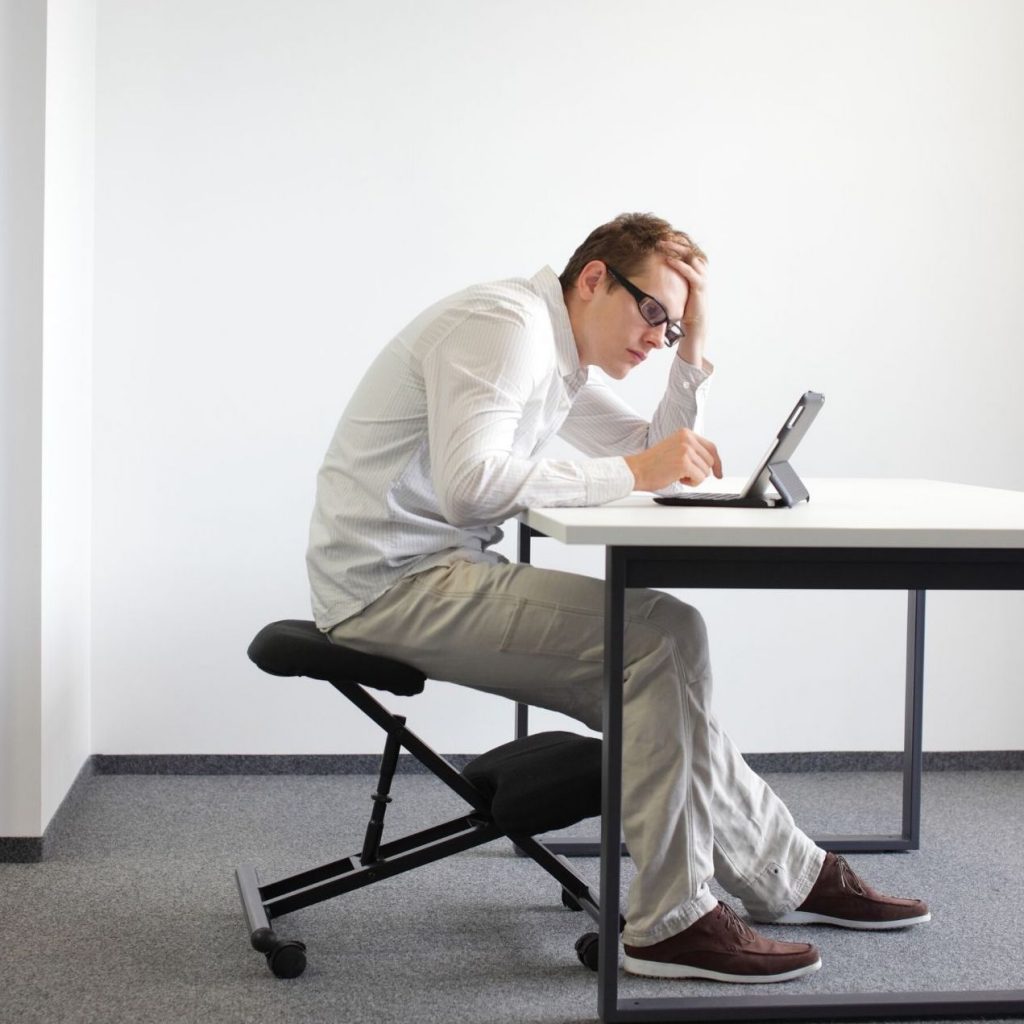Ergonomics for home working
Environment
Make sure your working environment is as optimal as possible. Poor temperature, whether that’s too hot or too cold, can increase your likelihood of stress and physical aches and pains. It can also affect your concentration as can noise, be it from a colleagues or your own music.
Poor lighting will strain your eyes. Make sure there isn’t a bright light coming from any angle as this can cause unnecessary strain. Make sure there is enough space between you and your co-worker to be able to utilise your desk most effectively.
Good Posture

Sitting
• Back upright with a natural “S” curve through your spine - hips slightly higher than your knees
• Shoulders relaxed
• Forearms horizontal
• Feet flat on the floor

Standing
• Natural “S” shape curve of your spine maintained
• Shoulders relaxed back and down
• Feet hips width apart with weight evenly through both legs central, not tilting forwards or backwards

Avoid
• Slumping
• Lowering your chair
• Sitting or standing unevenly for long periods
• Leaning forward
• Twisting
• Hunching your shoulders
Eyes

Look away from your screen regularly
to avoid straining your eyes.
Keep your screen clean from dust and debris,
and don’t be afraid to adjust your screen settings or zoom in and out as and when you need to.
Laptops

Many of our jobs require us to be more portable with our work. Laptops fulfil an excellent role of letting you be on the road with your job. There are down side to this however, when it comes to your wellbeing.
Laptop computers force us into poor postures with the screen being fused to the keyboard, forcing you to slump and hunch. Tablets and smartphones present a similar issue.
Try to avoid long periods of time working on any of these devises. If your laptop is your only computer, get a separate keyboard, mouse and a laptop stand. These do not have to be expensive, but will allow you to achieve the same ergonomic set-up that you would with your desktop computer.
If working on your laptop or tablet is unavoidable, ensure you find the most suitable place to work, and take more regular breaks as this poor posture will cause issues much quicker than a good posture.
Some employees have to carry their laptops and other work documents with them fairly regularly. If this is the case, ensure you carry it in a rucksack wearing both straps. This prevents asymmetrical leaning postures and frees up your hands.
If using a phone consider a headset. Holding the phone between your ear and your shoulder quite quickly aggravates musculoskeletal aches and pains.

